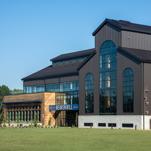Les Miserables by Victor Hugo
Les Miserables at a Century and a Half

Victor Hugo’s Les Miserables debuted 150 years ago in 1862 and now has become the literal definition of The Big Book. Les Miserables is:
-One of the longest novels in history: 1,900 pages in the original French, 1,400 in English.
-365 chapters long.
-One of the “half-dozen greatest novels of the world,” said Upton Sinclair.
-Packed with 11 major and 40+ minor characters.
-The book that launched at least 60 film versions (#61 coming soon to multiple multiplexes near you).
-The source of countless dramatic adaptations, including the musical, which has played in 42 countries to about a billion people.
-An ever-flowing fount of video games, unofficial sequels and prequels, adoring websites, comic books, radio shows, spoofs and satires, festivals, full-length cartoons, academic dissertations and an inordinate plethora of 24601-themed swag. (For the uninitiated, 24601 was protagonist Jean Valjean’s prison number.)
-The inspiration for many modernized versions, including the TV series The Fugitive and every story about misunderstood revolutionaries. The Last Poets, N.W.A.’s Straight Outta Compton and Rage Against the Machine all pay homage to author Victor Hugo.
-Still universally loved and critically panned. Flaubert didn’t like it, many reviewers called it “immoral,” and French literary lions the Goncourt brothers despised it. As you can tell, critical opinion doesn’t count for much.
Modern attention-span-deficient types may not have the chops to read The Big Book, and will most likely encounter Hugo’s monstre either in a theatre or a theater. Here, as a public service for the easily distracted, are a few short, digestible factoids to help the contemporary audience make sense of the experience:
–Les Miserables doesn’t just translate from the Gallic as “The Miserables.” It also can mean “The Wretched,” “The Poor Ones,” or “The Victims.” (You know, the 47 percent.)
-Hugo didn’t write the first romantic sociological treatise about society’s role in fostering crime and criminal behavior, but he definitely wrote the definitive version. Modern literature since then has followed the path that he and Dickens blazed. Camus, Tolstoy, Dostoevsky and Steinbeck are all Victor Hugo’s kids.
-Literature used to be for and about the upper classes, who could read; not the lower classes, who were illiterate. More than any other book, Les Miserables changed that.
–Les Miserables isn’t just one novel; it’s five:
oFantine
oCosette
oMarius
oThe Idyll in the Rue Plumet and the Epic in the Rue St. Denis
oJean Valjean
-All five stories revolve around homeless ex-con Valjean and his attempts to escape the relentless pursuit of rabid, rule-bound cop Javert, while trying to turn his life around and do good for others. This fact alone—that a major work of art features a working-class hero—stood as revolutionary in 1862.
-Contrary to popular belief, the books of Les Miserables aren’t set during the French Revolution (1789) but instead cover the years between 1815, when Napoleon Bonaparte was finally defeated at Waterloo, and 1832, when French students rioted against rising prices and food shortages in the futile, failed June Rebellion.
-The ineluctable themes of the novel—misery, poverty, injustice and, despite all that, human altruism—have continued to resonate for literally billions of people for a century and a half, probably because they’re universal.
-When the novel was released, Hugo and his publisher engaged in the shortest correspondence in history. Hugo, in political exile in England at the time, wondered how the book was selling, and telegraphed “?”. The publisher replied “!”. The book went on to sell 9,000 bazillion copies worldwide. Confederate soldiers loved it, and called themselves “Lee’s Miserables” toward the end of the Civil War.
-Hugo wasn’t just a poet and dramatist and novelist, he was a lower case-R republican who opposed the royalists and their imperialistic aims, was exiled for 19 years and eventually served in the French Senate. He promoted democratic reforms, convinced Queen Victoria to spare the lives of six Irish “terrorists,” helped do away with the death penalty in Portugal, Switzerland and Columbia, and tried to convince the United States not to execute anti-slavery activist John Brown.
-Hugo was caught in a hail of bullets during the Rebellion. He escaped injury.
-His other great novel, Notre-Dame de Paris, is also known as The Hunchback of Notre Dame. Lon Chaney, dude!
-Verdi based his opera Rigoletto on Hugo’s 1832 play Le roi s’amuse.
-Hugo is buried in the Pantheon in Paris, in the pauper’s pine coffin his will stipulated.
-Just about every city, town and village in France has an Avenue Victor Hugo.
-His funeral, in 1885, drew two million mourners. Top that, hipster ironists.
-

-

-

-

-

-

-

-

-

-

-

-

-

-

-

-

-

-

-

-

-

-

-

-

-

-

-

-

-

-

-

-

-

-

-

-

-

-

-

-








































